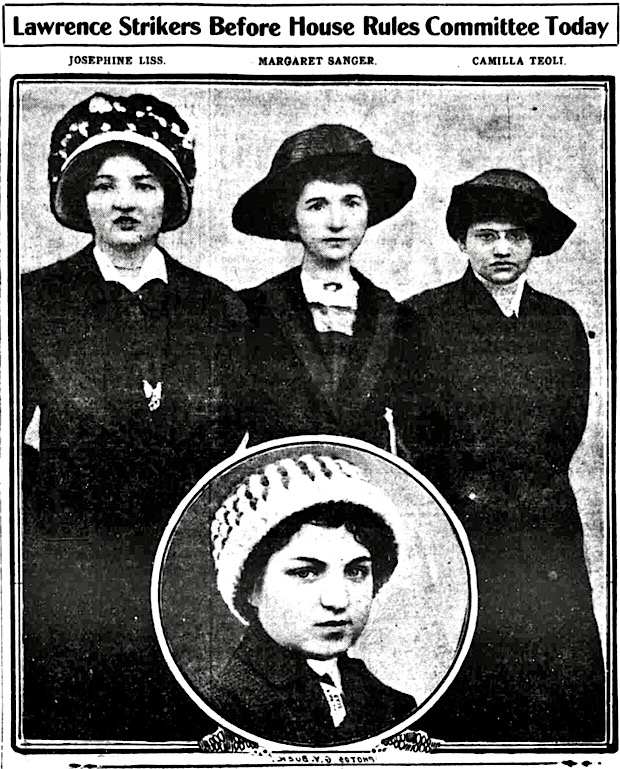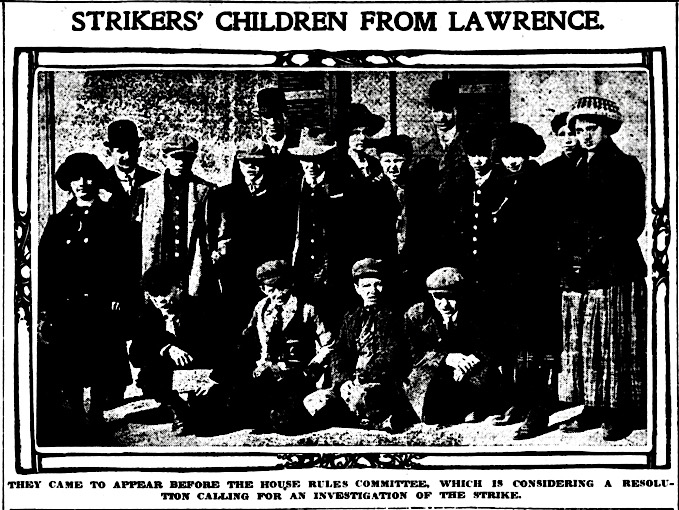 —————
—————
Hellraisers Journal – Wednesday October 23, 1912
Mother Jones News Round-Up for September 1912, Part III
Speaks at Charleston, West Virginia: “Oppression of the People Must Go!”
September 21, 1912, Charleston, West Virginia
-Mother Jones Speaks at Public Meeting Following Parade of Strikers’ Children:
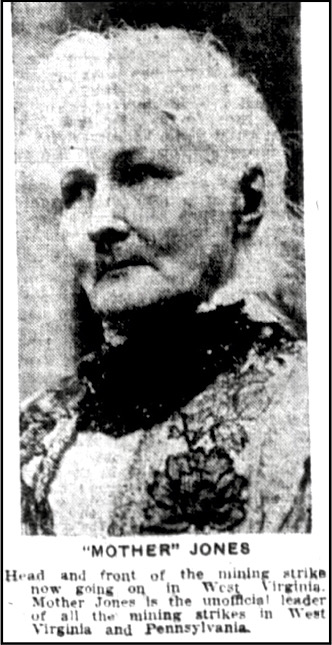
I want to say to those children, they will be free; they will not be serfs. We have entered West Virginia-I have-and a hundred thousand miners have pledged their support to me, “If you need us, Mother, we will be there.” Five thousand men last Sunday night said, “We are ready, Mother, when you call on us.”
The revolution is here. We can tie up every wheel, every railroad in the State, when we want to do it. Tyranny, robbery and oppression of the people must go. The children must be educated. The childhood will rise to grander woman and grander man in happy homes and happy families-then we will need no saloons. We will need no saloons, nor any of your prohibition. As long as you rob us, of course we drink. The poison food you give us needs some other narcotic to knock the poison out of it. They charge you $2.40 for a bushel of potatoes at the “pluck-me” store. Ten pounds of slate in 9700 pounds of coal and you are docked-then they go and “give for Jesus.” “How charming Mr. Cabell is, he gives us $500.00.”
Let us, my friends, stand up like men. I have worked for the best interests of the working people for seventy-five years. I don’t need any one to protect me. I protect myself. I don’t break the law. Nobody molests me, except John Laing. John is the only dog in West Virginia that attacks a woman. He is the only fellow that would do that. I am not afraid of John Laing. I would give him a punch in the stomach and knock him over the railroad. I don’t know who punched him-he lost his pistol. I put my hand on him and told him to go home to his mother. I gave him a punch in the stomach, and he fell over the railroad track and lost his pistol. He didn’t know he lost it until he reached home.
He said, “You are disturbing my miners.” My slaves! Scabs! Dogs!
[…..]
Shame! Forever shame! on the men and women in the State of West Virginia that stand for such a picture as we have here today-[Referring to the children of the coal camps who marched in the parade]-Shame! When the history is written, what will it be, my friends, when the history of this crime, starvation and murder of the innocents, so they can fill the operators’ pockets, and build dog kennels for the workers. Is it right? Will it ever be right?
Now, I understand Mr. White is going to speak at the court house. He will have something to tell you.
This strike ain’t going to end until we get a check-weighman on the tipple. That is the law. It is on the statute books-that your coal will be weighed….
You miners here have stood for it, you have starved your children, starved yourselves, you have lived in dog-kennels-they wouldn’t build one for their dogs as bad as yours. You have lived in them and permitted them to rob you, and then got the militia for the robbers. You can get all the militia in the state, we will fight it to the finish-if the men don’t fight the women will. They won’t stand for it.
Be good, boys, don’t drink. Subscribe for the Labor Argus. If I was sentenced to sixteen months to jail, and these guys found it out I would be in jail longer. I don’t worry about it. I am down at the Fleetwood when ever they want to put me in jail for violation of the law, come along for me, come. There is coming a day when I will take the whole bunch of you and put you in jail. (Applause.)
[Photograph added.]
From the Baltimore Sun of September 22, 1912:
LABOR CONFERENCE VAIN
———-
Refusal To Take Up Kanawha Coal Troubles
Keeps Union Men Away.
———-
Charleston, W. Va., Sept 21.-The representatives of the commercial and civic bodies of West Virginia called by Governor Glasscock to consider the labor situation adjourned this afternoon after an exciting session without having accomplished anything.
International President John P. White, of the United Mine Workers of America, with Vice-President Hayes, announced early in the day that they would have nothing to do with the conference because they had learned that it was not the purpose of those in charge of the meeting to permit a discussion of the strike situation in the Kanawha coal field, where 1,200 West Virginia militiamen are maintaining martial law……
Hayes Addresses Strikers.
Vice-President Hayes addressed a large audience of striking miners and their sympathizers, and Mother Jones talked to another audience almost within the shadow of the State Capitol…..
Children Parade Streets.
One of the striking features of the day was the appearance on the streets of 100 children of striking miners, brought down from the mountains by “Mother” Jones.
They paraded the streets to the music of a band and bearing banners with these legends,
We are the babes that sleep in the woods.
We want to go to school and not to the mines.
The children, miners’ leaders say, were among those compelled to live much in the open since martial law was declared.
Continue reading “Hellraisers Journal: Whereabouts and Doings of Mother Jones for September 1912, Part III: “Revolution Is Here…Tyranny, Robbery and Oppression Must Go”” →
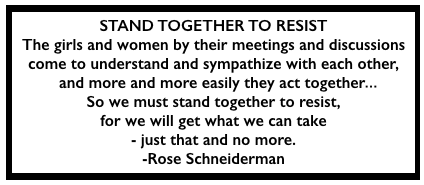 —————
—————
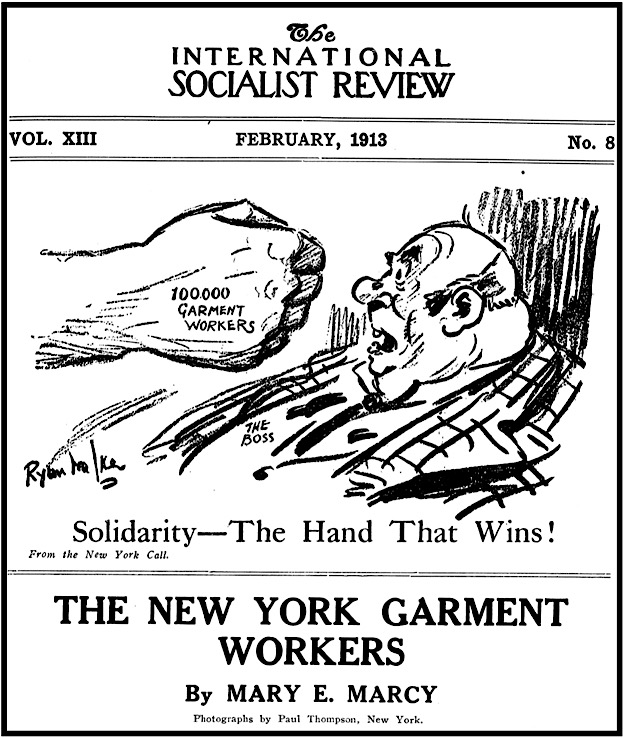
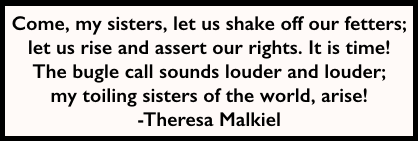 —————
—————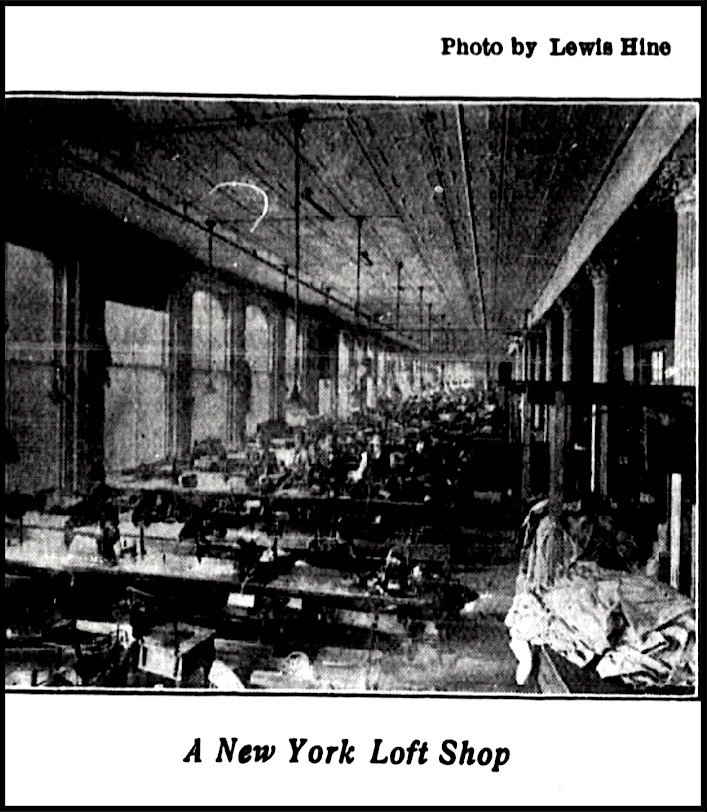
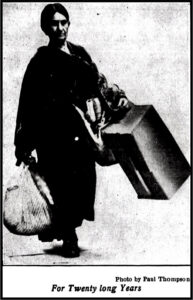
 —————
—————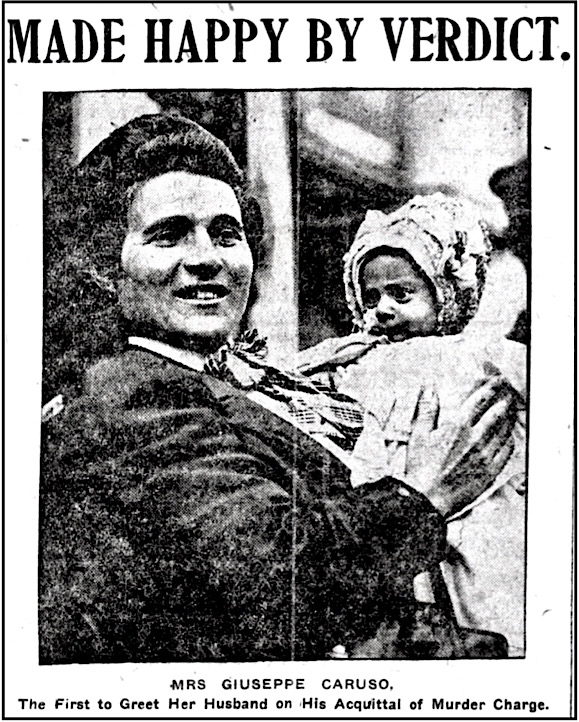
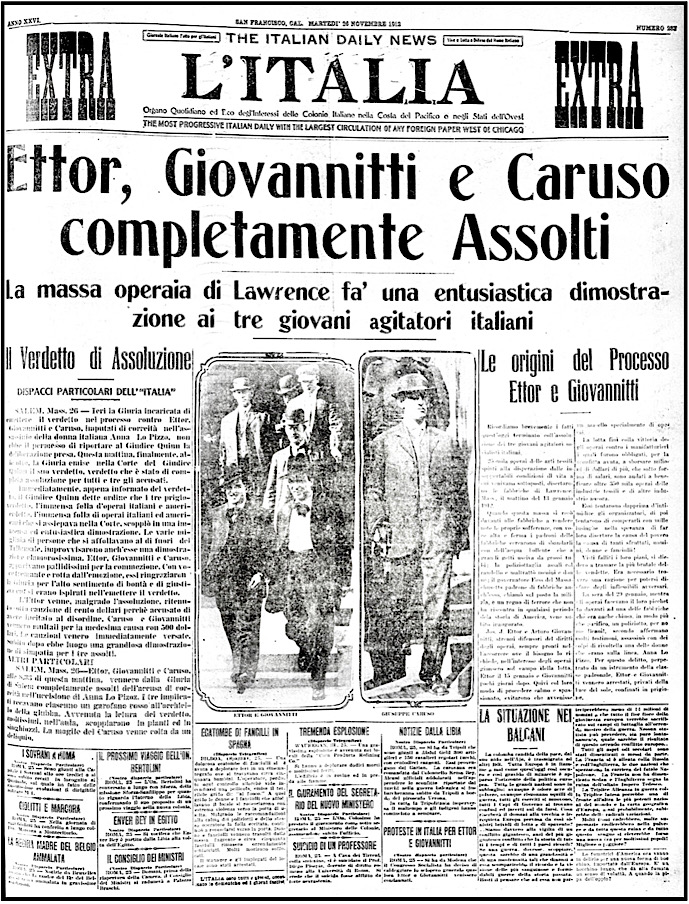
 —————
—————
 —————
—————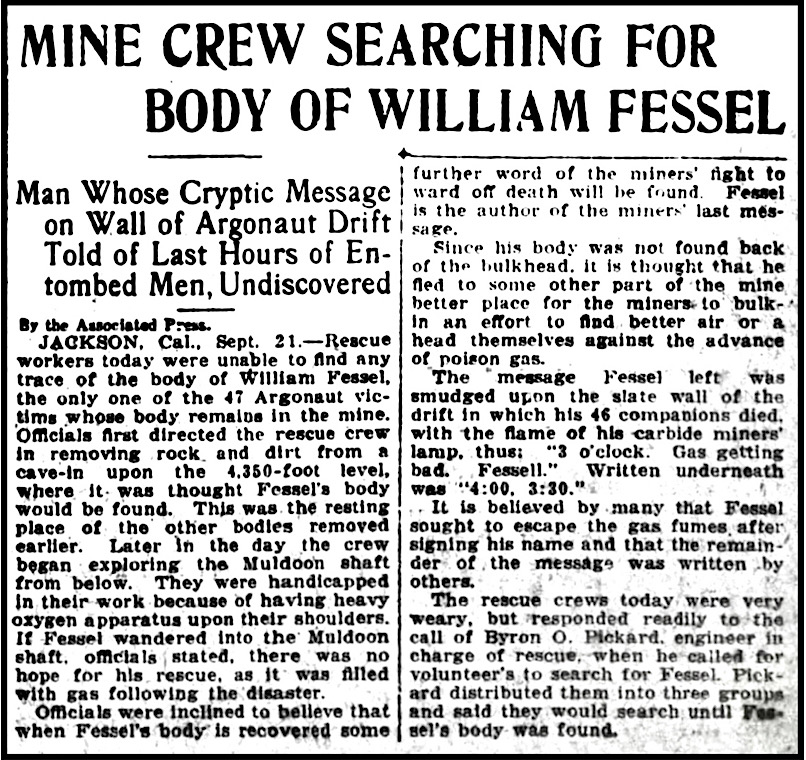

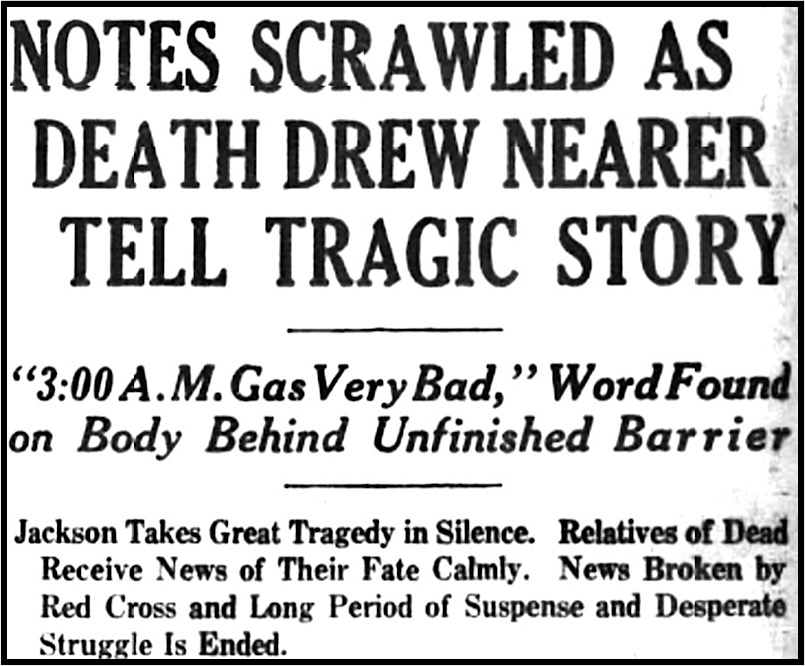

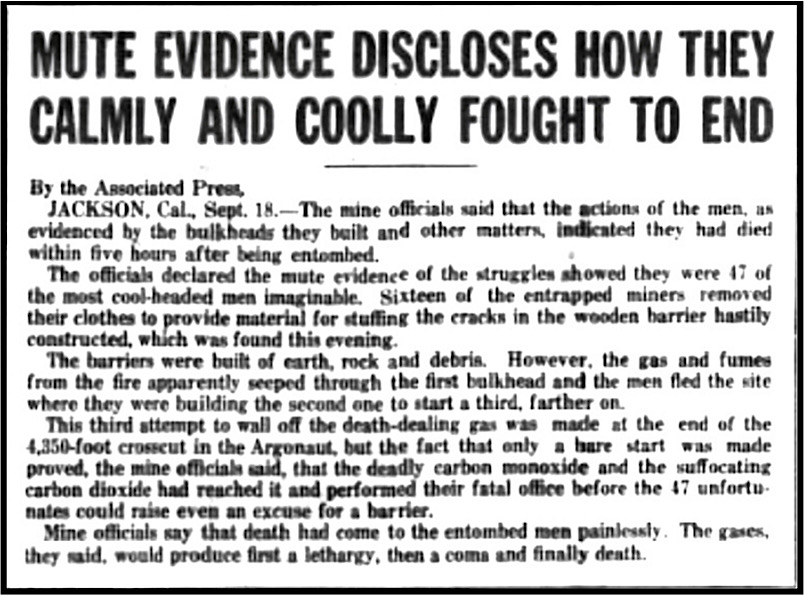
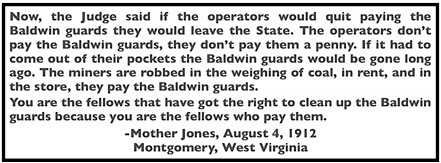 —————
—————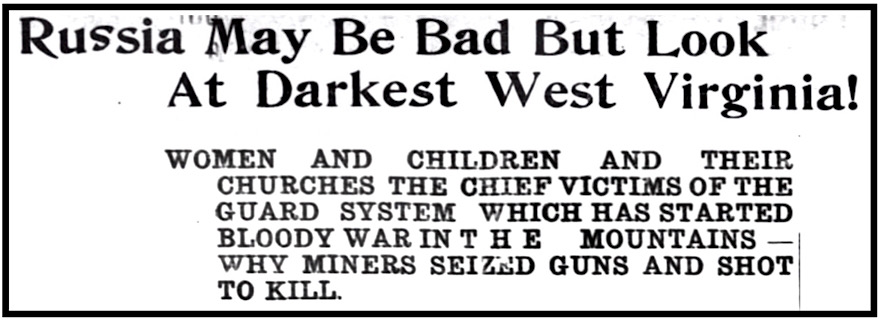
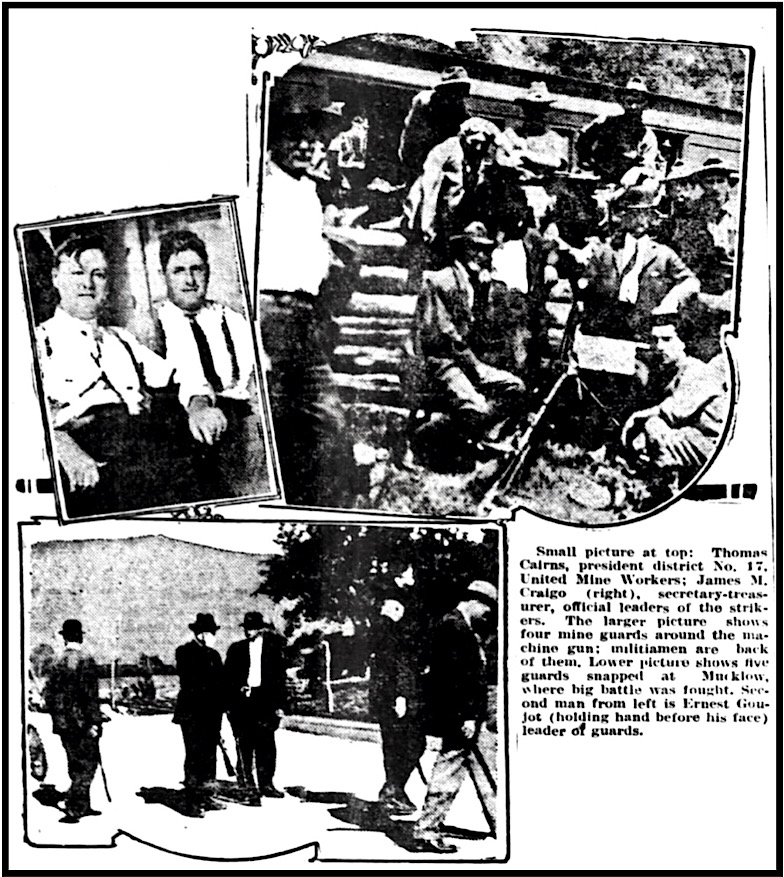 Small picture at top: Thomas Cairns, president district No. 17, United Mine Workers; James M. Craigo (right), secretary-treasurer, official leaders of the strikers. The larger picture shows four mine guards around the machine gun; militiamen are back of them. Lower picture shows five guards snapped at Mucklow, where big battle was fought. Second man from left is Ernest Goujot (holding hand before his face) leader of guards
Small picture at top: Thomas Cairns, president district No. 17, United Mine Workers; James M. Craigo (right), secretary-treasurer, official leaders of the strikers. The larger picture shows four mine guards around the machine gun; militiamen are back of them. Lower picture shows five guards snapped at Mucklow, where big battle was fought. Second man from left is Ernest Goujot (holding hand before his face) leader of guards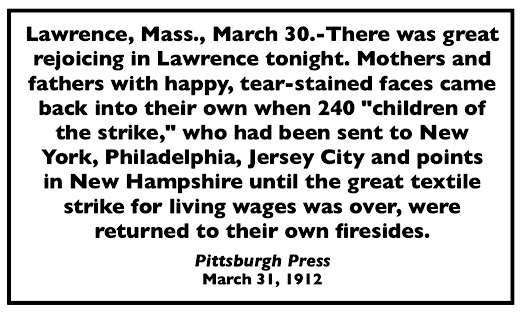 —————
—————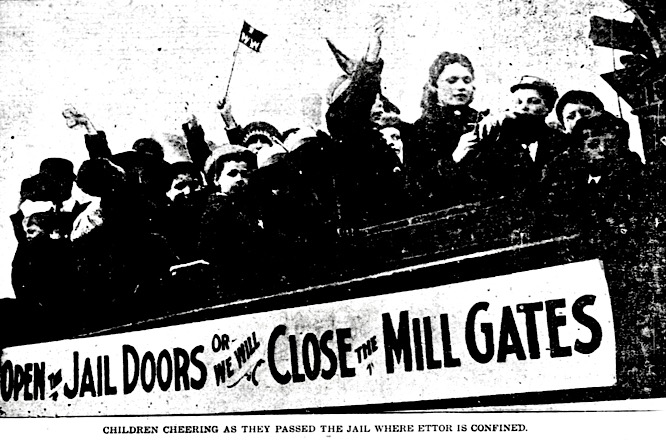
 —————
—————